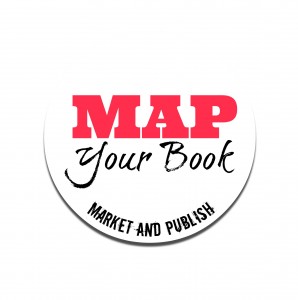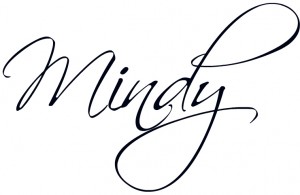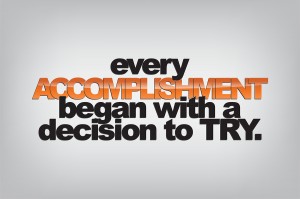The thing about life as a writer is that it’s often as much an emotional game as it is an intellectual one.
That’s part of what makes writing so special (and hard). Because we don’t just string words together in logical order to make our points …
Rather, we weave those words around sentiments, infusing our points with feeling so they prompt reactions.
That’s why robots will never take over the job of the writer. Robots and software programs may be able to get the grammar right, but they simply can’t hammer home the raw passion that comes from writing as a human.
So we’ve got the edge on robots. But where we fall short is in the realm of self-confidence. And if you want to write and publish your own book, it’s not just a matter of having something to write about. It’s also about believing you are the one who should tell the story, that others will want to read what you wrote, that they’ll get something out of it, and — dare I say it? — enjoy it!
That’s pretty much why every writer hits a dip in self-confidence somewhere along the writing-and-publishing journey. It could hit before you’ve written your first word. Or, it may not surface till you’re ready to publish and share your work with the world.
Either way, there’s a proven, simple trick to pulling yourself out of the shadow of doubt and back into the sunshine where ideas take root and grow.
It’s called an affirmation board, and it starts with recognizing the power of self-affirmation.
Self-Affirmation for Writers
By self-affirmation, I’m talking about identifying, and then focusing on your most important values and achievements. It’s the “I can do it!” style of thinking, where you lessen the effects of whatever makes you feel threatened. It’s how you overcome any roadblocks that surface from self-doubt.
Several studies document the neurophysiological effects produced by various forms of self-affirmation. In a study led by the psychology department at Carnegie Mellon University, researchers found that people under high levels of chronic stress had impaired problem-solving abilities. But after they completed a self-affirmation activity, their performance matched the levels of participants with low chronic stress levels.
And in research published in Psychological Science, it was shown that self-affirmation triggers a neurophysiological reaction that helps us manage threats (like self-doubt).
It’s essentially a way to remind yourself who you really are — a writer — which reduces the effects any possible doubts can have on your ability to achieve long-term goals (like writing and publishing your book).
One of the best ways to bring self-affirmation into your life is to create an affirmation board, also known as a vision board.
3 Types of Vision Boards for Writers
The power of the vision board lies in creating a visual of your goals. Once you take the time and effort to make it, you’ll gain regular self-assurance simply by looking at it every day and keeping your writing and publishing goals at the forefront of your mind.
You’ll want to design it so it represents your ideal life as it connects to your book-authoring dreams. Look for pictures that symbolize the experiences you hope to have as a published author. Maybe you’d like to participate in signings at local bookstores, or win a specific award, or get recognized by certain blogs or newspapers.
Or perhaps you’re looking forward to the credibility boost a published book will bring your business. Could be you’re going for that #1 Best-Selling Author title, or you just want the knowledge that your book mattered to someone who read it.
Include goals associated with the success of your book, and your overall success as a writer, and look for pictures or phrases that tie back to those goals.
Here are three forms your vision board can take:
#1: Traditional Vision Board
For this approach, you can use a poster board, a bulletin board, a large photo frame, or even just tack an assortment of pictures to your wall. Then pin up whatever images you want that resonate with you and provide a visual of your goals. Could be magazine clippings, photographs, drawings, quotations, or handwritten notes. You might even put a photo of yourself on your board (just make sure you’re happy in the photo!). Go for whatever words, phrases, or images most inspire you.
#2: Portable Vision Board
This approach is similar to a traditional vision board that hangs on your wall, but instead of one large board, you’d break it up into several notecards. Then you can carry the notecards with you wherever you go, tucking them in your pocket, wallet, or purse, so you always have them nearby. If you find yourself waiting for any length of time, pull out a “vision card” and look at it.
#3: Digital Vision Board
A digital version is the newest approach to vision-boarding. Pinterest is terrific for this. And if you want, you can mark the board as private so others aren’t privy to your heart’s dearest desires. Or, use Photoshop or a similar photo-editing software to combine multiple photos into a single image, then save it as the wallpaper on your desktop. You can also use one of these programs to make a large printable image, say 16” x 20”, and then choose a photo service to print it.
Don’t make it too complicated — simplicity is beautiful and sends a clear message. If you feel like you have more than you can fit on one board, break it up into multiple boards. Perhaps one board will show your success as an author, while another board shows the financial benefits or personal advantages you receive thanks to having a book published.
Once it’s done, put it in your writer’s space so you see it every day. Spend time each day — preferably at the beginning of the day — looking at it, visualizing, believing, and internalizing your goals.
Vision Boarding “Disclaimer”
I don’t think it’s helpful to pepper your writing space with unreasonably positive self-statements like, “I am the greatest writer that ever lived.” Because you aren’t. And there’s no way you could ever prove or achieve that proclamation (after all, everybody’s version of the “greatest writer” varies).
Plus, studies show that when people get feedback they think is overly positive — even if it’s feedback you’re feeding yourself — then you’re less inclined to believe it.
So stay honest.
Besides, that’s not what this is about. Affirmations are just one part of this journey. Consider them part of a broader program of intervention intended to move you closer to your goals, and to give you the confidence to launch your self-marketing platform. Other approaches include mindfulness, meditation, and self-hypnosis, which I’ll explore in future blogs.
So just imagine your life once you achieve what’s on your vision board. As Maya Angelou once said, “Ask for what you want … and be prepared to get it.”
Personally, I’m going to try the digital option. Maybe a Pinterest board that pops up as my home page …
What about you? What type of vision board resonates most with you?
To your writing success,








